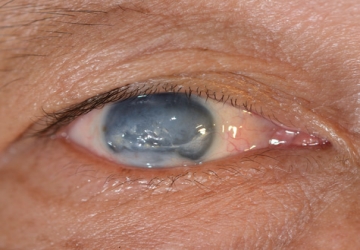
Glaucoma
Glaucoma is a general name for a group of eye diseases affecting the optic nerve. The optic nerve responsible for transmitting information from the eye to the brain is located in the back of the eye. Injury to this nerve can lead to vision loss.
There are three types of glaucoma:
- Wide-angle glaucoma / Open-angle glaucoma
- Narrow-angle glaucoma ( closed-angle glaucoma)
- Congenital glaucoma
Symptoms of glaucoma
With the question of Dr. Hantira - Assistant Professor of the Ophthalmology Department - Umm Al-Qura University - Saudi Arabia, he explained to us
If someone has open-angle glaucoma, loss of vision is likely the only symptom they will suffer from.
Symptoms of open-angle glaucoma are symptoms Somewhat mild, such as slightly blurred vision, from time to time and for a short period of time. But the most severe symptoms indicating narrow-angle glaucoma are those that include blurred vision for longer periods of time, pain around the eyes, seeing some halos around strong light points, red eyes, nausea and vomiting.
Symptoms of congenital glaucoma usually include sunken eyes and hypersensitivity to light. Children may have other additional symptoms, such as constant itching, squinting, or closing the eyes most of the time.
Causes and risk factors of glaucoma
Dr. Hantira explained:
In general, damage to the optic nerve results from intense pressure inside the eye (intraocular hypertension).
Glaucoma may also occur as a result of an eye injury, eye surgery or a cancerous tumor in the eye. In addition, there are some medicines, such as corticosteroids, which are used to treat various other diseases that may lead to glaucoma.
Diagnosing glaucoma
Dr. Hantira always asks questions about the symptoms a patient is experiencing if he suspects that someone is suffering from glaucoma.
Glaucoma treatment
Glaucoma is treated, in most cases, with medications, such as eye drops. Emphasis on the constant and daily use of eye drops.
Dr. Hanatera explained:
That for the elderly, treatment will not be able to restore their lost vision, but it can help them maintain the status quo. Treatment is designed to stop the optic nerve damage by relieving pressure in the eye.